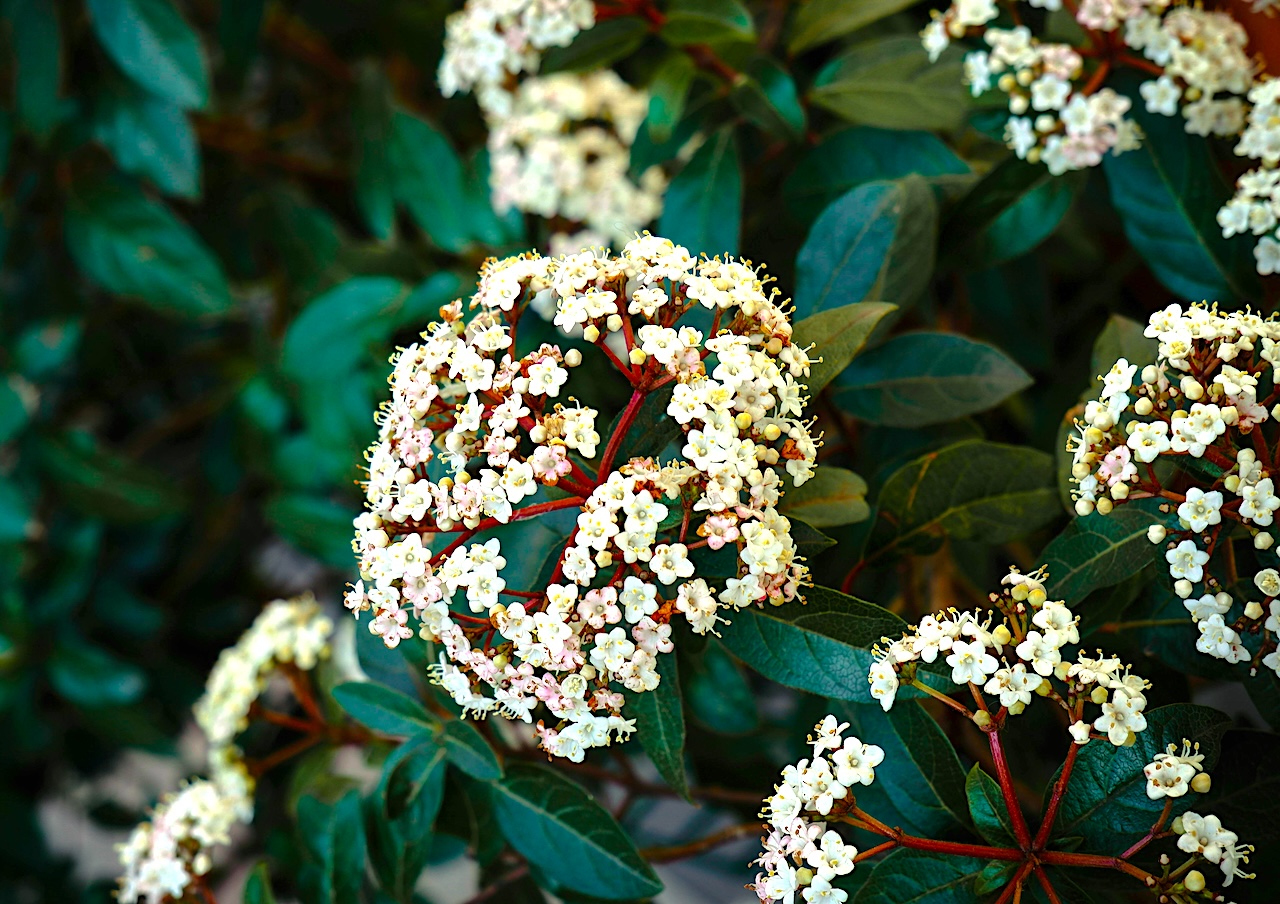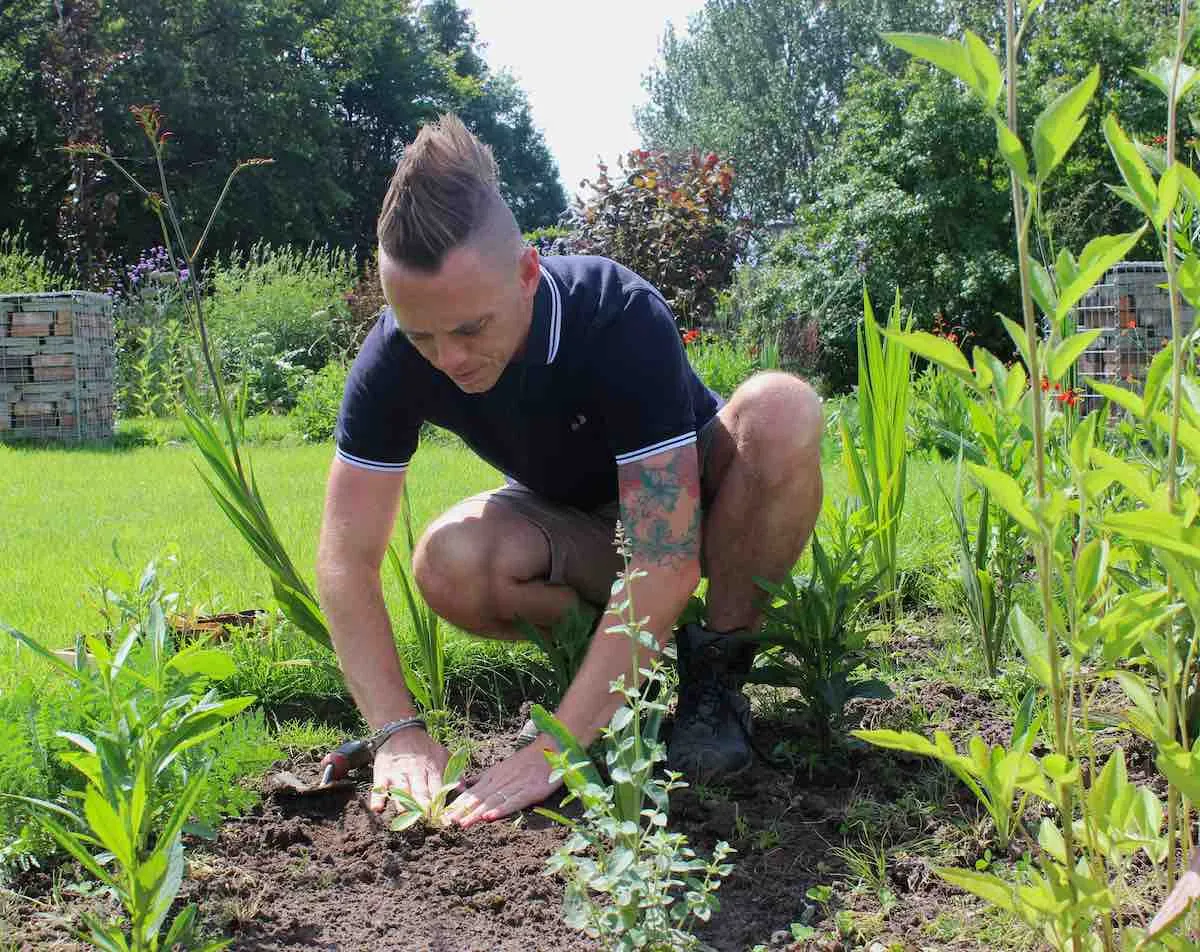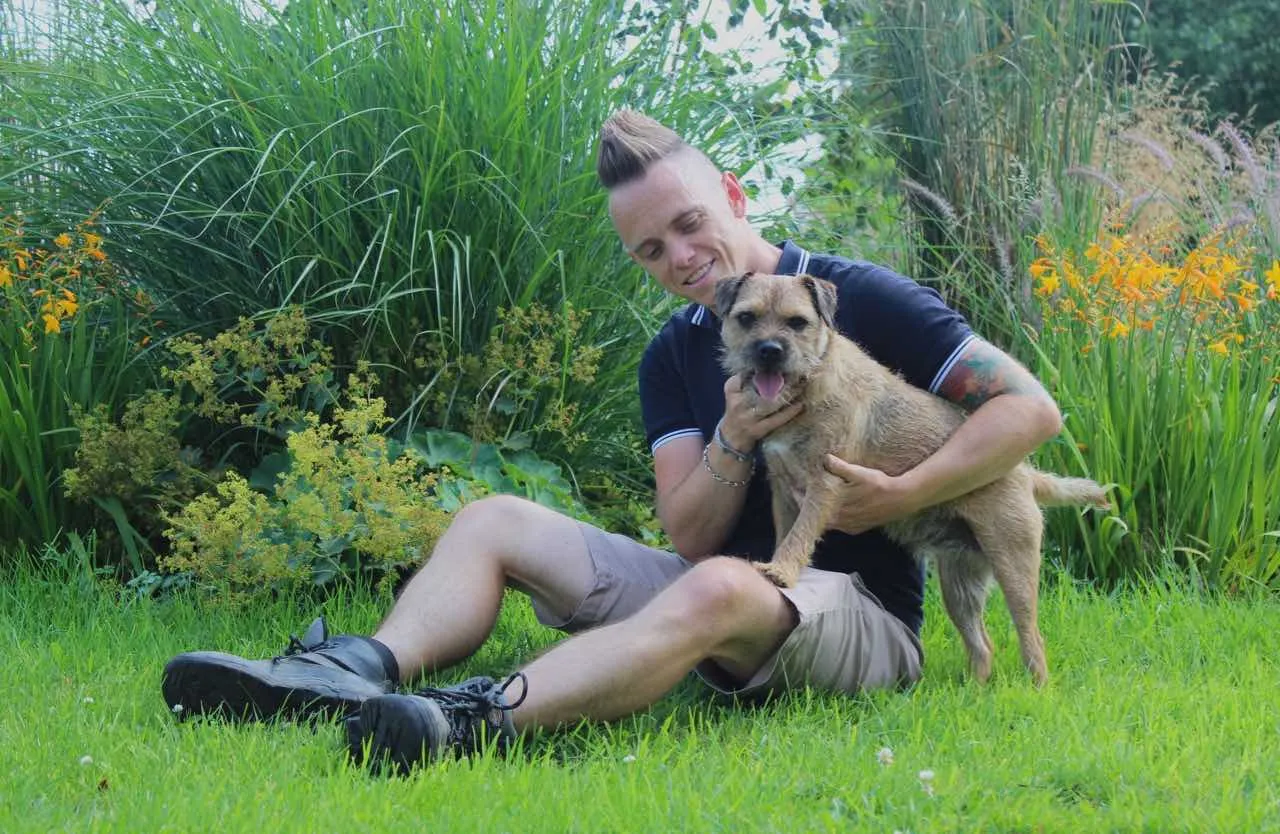Ask a Gardening Question Forum
 Lee Burkhill: Award Winning Designer & BBC 1's Garden Rescue Presenters Official Blog
Lee Burkhill: Award Winning Designer & BBC 1's Garden Rescue Presenters Official Blog

Welcome to the ultimate beginner gardening and garden design forum! Where no gardening question is too silly or obvious. This online gardening forum is run by Lee Burkhill, the Garden Ninja from BBC 1's Garden Rescue and a trusted group of experienced gardeners.
Whether you are a beginner or an expert gardener, it's a safe place to ask garden-related questions for garden design or planting. If you have a problem in your garden or need help, this is the Garden Forum for you!

Posting Rules: This space is open for all garden-related questions. Please be polite, courteous and respectful. If you wouldn't say it to your mum's face, then don't post it here. Please don't promote, sell, link spam or advertise here. Please don't ask for 'cheeky' full Garden redesigns here. They will be deleted.
If you need a garden design service, please use this page to book a design consultation. I will block anyone who breaks these rules or is discourteous to the Garden Ninja Community.
Join the forum below with your gardening questions!
Quote from frostygarden1 on 22nd March 2025, 10:51 amI have two viburnum plants at my front door. They have grown well for 10 years, until summer 2024. Then, something has attacked them and I don’t know what. One has survived, one is on its last legs 😢. Does anyone know what could cause this and what I can do to prevent further damage?
The closeup photo is of the healthier of the two plants. There is new growth this spring.
I’m in the UK (South). Thank you!
I have two viburnum plants at my front door. They have grown well for 10 years, until summer 2024. Then, something has attacked them and I don’t know what. One has survived, one is on its last legs 😢. Does anyone know what could cause this and what I can do to prevent further damage?
The closeup photo is of the healthier of the two plants. There is new growth this spring.
I’m in the UK (South). Thank you!
Uploaded files:Quote from Lee Garden Ninja on 27th March 2025, 8:41 amHi @frostygarden1
Thanks for your comment on your sickly Viburnum. When Viburnum has brown marks all over the leaves, including the edges, and ragged, half-scroched leaves, it's usually a sign of bacterial leaf spot or bacterial blight. This is an infection of the Viburnum usually caused by pruning wounds that haven't healed properly or a pest like the Viburnum beetle leaving wounds on the plant that then get infected.
Sadly, there is no cure, and destruction and burning are the best bet, so it doesn't spread to the other Viburnum. You'll also need to sterilise your cutting tools afterwards too!
Let me provide some more detail for other Ninjas as to why Viburnums suffer from leaf spot and bacterial infections.
1. Identifying Viburnum Bacterial Blight and Leaf Spot
A) Viburnum Bacterial Blight (Pseudomonas syringae)
Bacterial blight is a serious infection caused by Pseudomonas syringae, a bacterium that thrives in cool, wet conditions. It spreads via rain splash, overhead watering, or contaminated tools. How it gets there in the first place is always a bit of a mystery Frosty but certainly avoiding the conditions the disease likes is a good step!
Symptoms of Vibunrum Bacterial Blight
- Dark, water-soaked spots on leaves, often with yellow halos.
- Blackened, shriveled leaf edges.
- Twigs and stems may show dark streaks or dieback.
- New growth is distorted or wilts prematurely.
B) Fungal Leaf Spot (Cercospora, Alternaria, or Anthracnose fungi)
Leaf spot diseases are fungal infections that appear as small, round, brown, or black spots on leaves. These often merge, creating large dead areas. The fungi spread through water droplets and thrive in humid conditions.
Signs of Fungal Leaf Spot
- Circular brown, purple, or black spots on leaves.
- Leaves turning yellow before dropping off.
- In severe cases, defoliation and plant weakening.
Both bacterial and fungal diseases spread rapidly in wet conditions, so prevention is key to keeping your viburnum in top shape.
2. How to Prevent Viburnum Bacterial Blight & Leaf Spot
The best way to protect your viburnum is to create an environment that discourages bacterial and fungal infections. Most ot this is around careful consideration of where to plant and to avoid making pruning cuts in cold, wet weather, winter or other times of year when the healing of your Viburnum is slow.
i) Choose Resistant Varieties
Some viburnums have better disease resistance than others. However, no Viburnum is infallible and you still need decent hygiene practices and gardening principles. If you’re planting new ones, consider opting for resistant varieties like:
- Viburnum dentatum (Arrowwood Viburnum)
- Viburnum plicatum (Japanese Snowball Viburnum)
- Viburnum nudum (Smooth Witherod Viburnum)
Avoid highly susceptible varieties like Viburnum tinus, which is prone to bacterial blight.
ii) Improve Air Circulation
Bacteria and fungi thrive in damp, stagnant conditions. Improving air circulation reduces humidity and allows foliage to dry more quickly. Planting your Viburnums with plenty of airflow and against cold or shaded walls is key to helping prevent blight or bacteria from attacking your shrub.
- Plant viburnums at least 3-5 feet apart to ensure proper airflow.
- Prune dense growth to open up the canopy, allowing light and air to reach the inner branches.
- Remove dead or congested branches to prevent moisture buildup.
iii) Water Wisely – Avoid Overhead Watering
Wet leaves encourage disease, so how you water your viburnum matters.
- Always water at the base to keep foliage dry. Use a soaker hose or drip irrigation instead of sprinklers.
- Water early in the morning so any excess moisture evaporates during the day.
- Avoid watering in the evening, as prolonged dampness increases the risk of infection.
iv) Mulch to Prevent Soil Splash
Soil can contain bacteria and fungal spores, which splash onto leaves when it rains. A layer of mulch helps prevent this.
- Apply a 5-8 cm layer of organic mulch (bark, wood chips, or compost) around the base.
- Keep mulch away from the main stem to avoid rot.
v) Use Clean, Sharp Pruning Tools
Pruning infected branches with dirty tools spreads bacteria and fungi. Always:
- Sterilize your tools with a 10% bleach solution or rubbing alcohol before and after pruning.
- Prune only in dry weather to prevent bacteria from entering fresh cuts.
- Dispose of infected plant material properly—never compost diseased leaves.
https://youtu.be/zsdpzrxxOj8
Do let us know how you get on, and don't forget to also dispose of any fallen leaves and leaf litter under the shrub when you remove it. On a positive note it does mean you can now choose another plant to replace it, so every cloud!
All the best
Thanks for your comment on your sickly Viburnum. When Viburnum has brown marks all over the leaves, including the edges, and ragged, half-scroched leaves, it's usually a sign of bacterial leaf spot or bacterial blight. This is an infection of the Viburnum usually caused by pruning wounds that haven't healed properly or a pest like the Viburnum beetle leaving wounds on the plant that then get infected.
Sadly, there is no cure, and destruction and burning are the best bet, so it doesn't spread to the other Viburnum. You'll also need to sterilise your cutting tools afterwards too!

Let me provide some more detail for other Ninjas as to why Viburnums suffer from leaf spot and bacterial infections.
Bacterial blight is a serious infection caused by Pseudomonas syringae, a bacterium that thrives in cool, wet conditions. It spreads via rain splash, overhead watering, or contaminated tools. How it gets there in the first place is always a bit of a mystery Frosty but certainly avoiding the conditions the disease likes is a good step!
Symptoms of Vibunrum Bacterial Blight
Leaf spot diseases are fungal infections that appear as small, round, brown, or black spots on leaves. These often merge, creating large dead areas. The fungi spread through water droplets and thrive in humid conditions.
Signs of Fungal Leaf Spot
Both bacterial and fungal diseases spread rapidly in wet conditions, so prevention is key to keeping your viburnum in top shape.
The best way to protect your viburnum is to create an environment that discourages bacterial and fungal infections. Most ot this is around careful consideration of where to plant and to avoid making pruning cuts in cold, wet weather, winter or other times of year when the healing of your Viburnum is slow.
Some viburnums have better disease resistance than others. However, no Viburnum is infallible and you still need decent hygiene practices and gardening principles. If you’re planting new ones, consider opting for resistant varieties like:
Avoid highly susceptible varieties like Viburnum tinus, which is prone to bacterial blight.
Bacteria and fungi thrive in damp, stagnant conditions. Improving air circulation reduces humidity and allows foliage to dry more quickly. Planting your Viburnums with plenty of airflow and against cold or shaded walls is key to helping prevent blight or bacteria from attacking your shrub.
Wet leaves encourage disease, so how you water your viburnum matters.
Soil can contain bacteria and fungal spores, which splash onto leaves when it rains. A layer of mulch helps prevent this.
Pruning infected branches with dirty tools spreads bacteria and fungi. Always:
Do let us know how you get on, and don't forget to also dispose of any fallen leaves and leaf litter under the shrub when you remove it. On a positive note it does mean you can now choose another plant to replace it, so every cloud!
All the best
Quote from jankhan on 17th April 2025, 6:14 amIt sounds like your Viburnum plants may have been affected by either Viburnum Bacterial Blight or a fungal leaf spot disease. These are common issues that can cause significant damage to Viburnum shrubs, especially in wet and cool conditions.
Viburnum Bacterial Blight (caused by Pseudomonas syringae) often manifests with dark, water-soaked spots on the leaves, which may have yellow halos. The leaves might also show blackened, shriveled edges, and new growth could become distorted or wilt prematurely. This disease spreads through water droplets and contaminated tools, making it important to keep your gardening practices clean.
Alternatively, fungal leaf spots (like Cercospora or Anthracnose fungi) could be the issue. These fungi cause circular spots on the leaves, often with brown, purple, or black centers. As the disease progresses, the leaves turn yellow and drop off. In severe cases, it can lead to defoliation and weaken the plant.
To help protect your remaining Viburnum, consider these steps:
Improve Air Circulation: Ensure your plants have enough space to allow air to circulate. This helps reduce moisture buildup, which is key to preventing both bacterial and fungal growth.
Watering Practices: Water at the base of the plant rather than overhead, and avoid evening watering to prevent prolonged moisture on the leaves.
Pruning: Always prune in dry weather, and use clean, sterilized tools to avoid spreading disease. Remove any dead or infected branches promptly.
Mulching: Apply mulch around the base to prevent soil splash, which can spread pathogens.
Lastly, if you’re looking to replace the plant, you might want to consider resistant varieties like Viburnum dentatum (Arrowwood Viburnum) or Viburnum plicatum (Japanese Snowball Viburnum), which are less prone to these issues.
By following these steps, you can help prevent further damage and keep your plants healthy moving forward.
It sounds like your Viburnum plants may have been affected by either Viburnum Bacterial Blight or a fungal leaf spot disease. These are common issues that can cause significant damage to Viburnum shrubs, especially in wet and cool conditions.
Viburnum Bacterial Blight (caused by Pseudomonas syringae) often manifests with dark, water-soaked spots on the leaves, which may have yellow halos. The leaves might also show blackened, shriveled edges, and new growth could become distorted or wilt prematurely. This disease spreads through water droplets and contaminated tools, making it important to keep your gardening practices clean.
Alternatively, fungal leaf spots (like Cercospora or Anthracnose fungi) could be the issue. These fungi cause circular spots on the leaves, often with brown, purple, or black centers. As the disease progresses, the leaves turn yellow and drop off. In severe cases, it can lead to defoliation and weaken the plant.
To help protect your remaining Viburnum, consider these steps:
Improve Air Circulation: Ensure your plants have enough space to allow air to circulate. This helps reduce moisture buildup, which is key to preventing both bacterial and fungal growth.
Watering Practices: Water at the base of the plant rather than overhead, and avoid evening watering to prevent prolonged moisture on the leaves.
Pruning: Always prune in dry weather, and use clean, sterilized tools to avoid spreading disease. Remove any dead or infected branches promptly.
Mulching: Apply mulch around the base to prevent soil splash, which can spread pathogens.
Lastly, if you’re looking to replace the plant, you might want to consider resistant varieties like Viburnum dentatum (Arrowwood Viburnum) or Viburnum plicatum (Japanese Snowball Viburnum), which are less prone to these issues.
By following these steps, you can help prevent further damage and keep your plants healthy moving forward.


Vuelo Top 10 Garden Blogger Award 2019
Chelsea Flower Show Director Generals Trade Stand Award 2018
5 Star Trade Stand Hampton Court 2018
Garden Media Guild New Talent 2017 Finalist
RHS & BBC Feel Good Gardens Winner 2016
 To my YouTube channel
To my YouTube channel
JOIN THE NINJAS
Join our Ninja community for your Exclusive Discounts
JOIN THE NINJAS

Be the first in line for new Guides, Discount codes and Offers